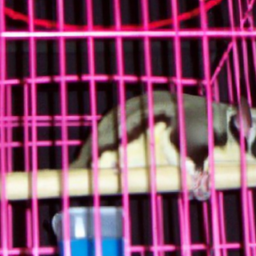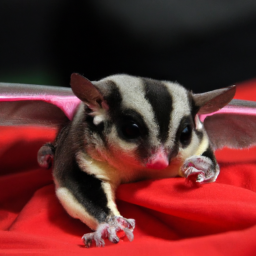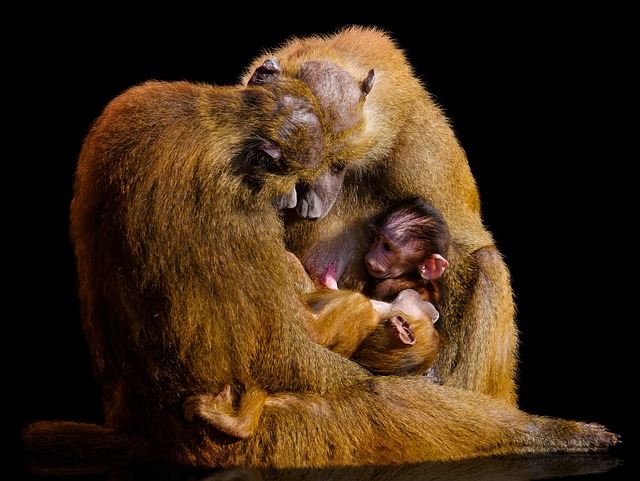How To Set Up A Sugar Glider Cage
In this article, you will learn how to set up a sugar glider cage and create a comfortable and enjoyable environment for your furry friend. We will discuss the essential components of a sugar glider cage, including the right size, bedding, and accessories. You will also discover tips and tricks to ensure the cage is safe and stimulating for your sugar glider. By the end of this article, you will have all the knowledge you need to set up the perfect sugar glider cage.
How To Set Up A Sugar Glider Cage
If you have recently decided to bring a sugar glider into your home, congratulations! These small, sociable creatures can make amazing pets with the right care and environment. One of the most important aspects of caring for a sugar glider is providing them with a suitable cage. In this article, we will guide you through the process of selecting the right cage, setting it up properly, and ensuring that your sugar glider has a comfortable and stimulating living space.
Choosing the Right Cage
Size of the Cage
When it comes to the size of the cage, bigger is always better. Sugar gliders are highly active animals and need plenty of space to climb, explore, and exercise. A minimum cage size for a single sugar glider should be at least 24 inches wide, 24 inches deep, and 36 inches tall. However, if you have the space, it is recommended to provide an even larger enclosure or consider a multi-level cage to allow for more vertical movement.
Material of the Cage
Sugar glider cages are available in various materials such as wire, mesh, or glass. It is important to choose a cage made of non-toxic materials that are safe for your pet. Wire cages with horizontal bars spaced no wider than 1/2 inch are ideal as they allow for climbing and provide good ventilation. Avoid cages with plastic components that your sugar glider may chew on, as this can be harmful to their health.
Cage Bar Spacing
One crucial aspect to consider when selecting a cage is the spacing between the bars. Sugar gliders are small creatures with agile bodies that can easily squeeze through narrow spaces. It is important to choose a cage with bar spacing no wider than 1/2 inch to prevent any potential escapes. This will also ensure that your sugar glider’s delicate feet and tail do not get caught between the bars.
Essential Cage Accessories
Nesting Pouches
Sugar gliders are nocturnal creatures that love to hide and sleep in cozy nests during the day. Providing multiple nesting pouches made of breathable fabric will give your sugar glider a sense of security and privacy. These pouches should be hung at different heights in the cage to encourage natural behaviors and offer variety for your pet.
Cage Platforms
Adding platforms or shelves to the cage will give your sugar glider more space to explore vertically. These platforms can be made of natural wood or plastic, as long as they are sturdy and secure. Make sure to add ramps or ladders between the platforms to facilitate movement and make it easier for your sugar glider to navigate their cage.
Feeding Bowls and Water Dispensers
Sugar gliders require fresh food and water daily. Providing shallow bowls for food and water will make it easier for your pet to access their meals. Opt for heavy ceramic or stainless-steel bowls that cannot be knocked over easily. Water should be provided through a small sipper bottle attached to the cage, as this will help prevent contamination and spills.
Proper Cage Placement
Avoiding Direct Sunlight
Sugar gliders are native to the rainforests of Australia and Indonesia, so they are not accustomed to direct sunlight. Placing their cage in a room away from direct sunlight is crucial to prevent overheating and potential health-related issues. Indirect sunlight is acceptable, but make sure to monitor the temperature and provide plenty of shade options within the cage.
Temperature Considerations
Sugar gliders thrive in temperatures between 65-75 degrees Fahrenheit. It is important to keep their cage away from drafts and extreme temperature fluctuations. Consider using a thermometer to monitor the temperature in the room and make necessary adjustments to ensure your pet’s comfort.
Quiet and Stress-free Environment
Sugar gliders are sensitive to loud noises and sudden changes in their environment. Placing their cage in a quiet area of your home, away from high traffic areas or loud appliances, will help reduce stress and allow them to get the rest they need during the day. Providing a calm and peaceful living environment is essential for your sugar glider’s well-being.
Creating a Comfortable Bedding
Safe Bedding Materials
Sugar gliders need a soft and cozy bedding material to snuggle into. Avoid using cedar or pine shavings, as these can be harmful to their respiratory system. Instead, opt for safe bedding options such as shredded paper, corn cob bedding, or fleece liners. These materials are comfortable for your sugar glider and can be easily cleaned or replaced.
Depth of Bedding
Adding a sufficient depth of bedding in the cage is important for your sugar glider’s comfort and natural burrowing instincts. Aim for a minimum depth of 3-4 inches, allowing your pet to dig, hide, and create tunnels within the bedding. This will not only provide them with a cozy sleeping space but also keep them entertained and mentally stimulated.
Cleaning and Maintenance
Regular cleaning and maintenance of the sugar glider cage is essential to keep it hygienic and odor-free. Spot-clean the bedding daily, removing any waste or soiled areas. Once a week, remove all the bedding and clean the cage thoroughly using a mild pet-safe cleaner. Rinse the cage thoroughly, allow it to dry completely, and then add fresh bedding before returning your sugar glider to their habitat.
Providing Enrichment Opportunities
Exercise Wheels
Sugar gliders are highly active animals that require plenty of exercise to stay healthy. Providing a safe and appropriate-sized exercise wheel in their cage will allow them to burn off energy and engage in natural behaviors. Choose a solid-surface wheel without any openings to prevent the risk of injury to their tails or limbs.
Climbing Branches
Sugar gliders are skilled climbers in the wild, so providing branches or tree limbs within their cage will encourage natural behavior and provide them with exercise opportunities. Make sure the branches are non-toxic and secure them firmly within the cage to prevent any accidents or injuries.
Toys and Chewable Items
Sugar gliders are intelligent animals that require mental stimulation. Providing a variety of toys, such as ropes, bells, and puzzle toys, will keep them entertained and prevent boredom. Additionally, offering chewable items made of safe materials such as untreated wood or non-toxic chew toys will help satisfy their natural urge to chew and prevent dental issues.
Choosing the Right Diet
Balanced Diet Options
A proper diet is crucial for the health and well-being of your sugar glider. A balanced diet for sugar gliders should consist of a combination of fresh fruits, vegetables, high-quality commercial pellet food, and protein sources such as cooked chicken or insects. Research and consult with a veterinarian experienced in sugar glider care to ensure that you are providing a nutritionally complete diet for your pet.
Fresh Fruits and Vegetables
Sugar gliders need a varied diet that includes a wide range of fresh fruits and vegetables. Offer a mix of leafy greens, such as kale or spinach, along with small amounts of fruits like apples, grapes, or blueberries. It is important to remember that sugar gliders have a high metabolism and will require fresh food daily.
Avoiding Toxic Foods
Some foods can be toxic or harmful to sugar gliders. Avoid feeding them chocolate, caffeine, avocado, onions, garlic, and foods high in sugar or salt. Additionally, certain plants and flowers can be toxic, so make sure to research and keep your sugar glider away from any potentially dangerous items.
Maintaining Proper Hygiene
Regular Cage Cleaning
Maintaining a clean and hygienic cage is essential for your sugar glider’s health. Regularly clean the cage using a mild pet-safe cleaner, making sure to disinfect all surfaces and accessories. Replace soiled bedding, wash food and water bowls thoroughly, and remove any waste or debris from the cage. A clean and fresh environment will help prevent the buildup of bacteria or parasites.
Spot Cleaning
In addition to regular cage cleaning, spot cleaning is necessary to maintain cleanliness on a daily basis. Sugar gliders have a specific spot in their cage where they choose to eliminate, commonly known as a “pee corner.” Regularly check and clean this area to prevent odors and to keep your sugar glider’s living space fresh.
Maintaining Air Quality
Sugar gliders are sensitive to airborne contaminants such as smoke, strong odors, or dust. To maintain good air quality within the cage, avoid smoking near the cage, use pet-safe cleaning products, and ensure that the room is well-ventilated. Keep the cage away from any drafts or vents that may cause temperature fluctuations or introduce pollutants.
Understanding Social Needs
Sugar Glider Sociability
Sugar gliders are highly social animals that thrive on companionship. It is recommended to keep sugar gliders in pairs or small groups to meet their social needs. Keeping them alone for extended periods can lead to loneliness and behavioral problems. If you are unable to provide constant companionship, consider getting a second sugar glider as a cage mate.
Pair or Group Housing
When housing multiple sugar gliders together, it is important to ensure that there is enough space and resources for each glider. A larger cage with multiple levels or separate sleeping pouches will allow them to establish their own territories and minimize any potential conflict. Introducing gliders that are already bonded is ideal, but introducing compatible gliders gradually can also lead to successful group housing.
Introducing New Gliders
Introducing new sugar gliders to an existing group should be done gradually and in a controlled manner. Start by keeping the new glider in a separate cage next to the existing group, allowing them to get used to each other’s presence. After a period of supervised introductions and positive interactions, you can gradually allow them to share the same cage under close supervision.
Monitoring Health and Wellness
Regular Veterinary Check-ups
Sugar gliders require regular check-ups with a veterinarian experienced in exotic pet care. Annual examinations can help identify any potential health issues and ensure that your sugar glider is receiving proper care. It is important to find a veterinarian who is knowledgeable about sugar gliders and their unique requirements.
Signs of Illness
Being familiar with signs of illness in sugar gliders is crucial for early detection and prompt treatment. Some common signs of illness include loss of appetite, excessive weight loss, lethargy, diarrhea, sneezing, discharge from the eyes or nose, or changes in behavior. If you notice any unusual symptoms, seek veterinary care immediately.
Providing Nutritional Supplements
In addition to a balanced diet, sugar gliders may require nutritional supplements to meet their specific dietary needs. Calcium and vitamin supplements are commonly recommended to prevent deficiencies and ensure optimal health. Consult with a veterinarian to determine the appropriate supplements and dosage for your sugar glider.
What Cleaning Supplies Are Safe to Use in a Sugar Glider Cage?
When cleaning sugar glider cage, it’s important to use safe supplies like vinegar, mild dish soap, and hot water. Avoid harsh chemicals that can be harmful to your pets. Regularly clean toys, water bottles, and food dishes to keep the cage clean and odor-free.
Conclusion
Setting up a sugar glider cage requires careful consideration of their physical and behavioral needs. By providing a spacious, stimulating, and safe environment, you will help ensure the health and well-being of your sugar glider. Remember to choose the right size and materials for the cage, provide essential accessories, create a comfortable bedding area, offer enrichment opportunities, provide a balanced diet, maintain proper hygiene, consider their social needs, and monitor their health regularly. With a well-thought-out cage setup and proper care, your sugar glider will thrive and bring you joy for years to come.






